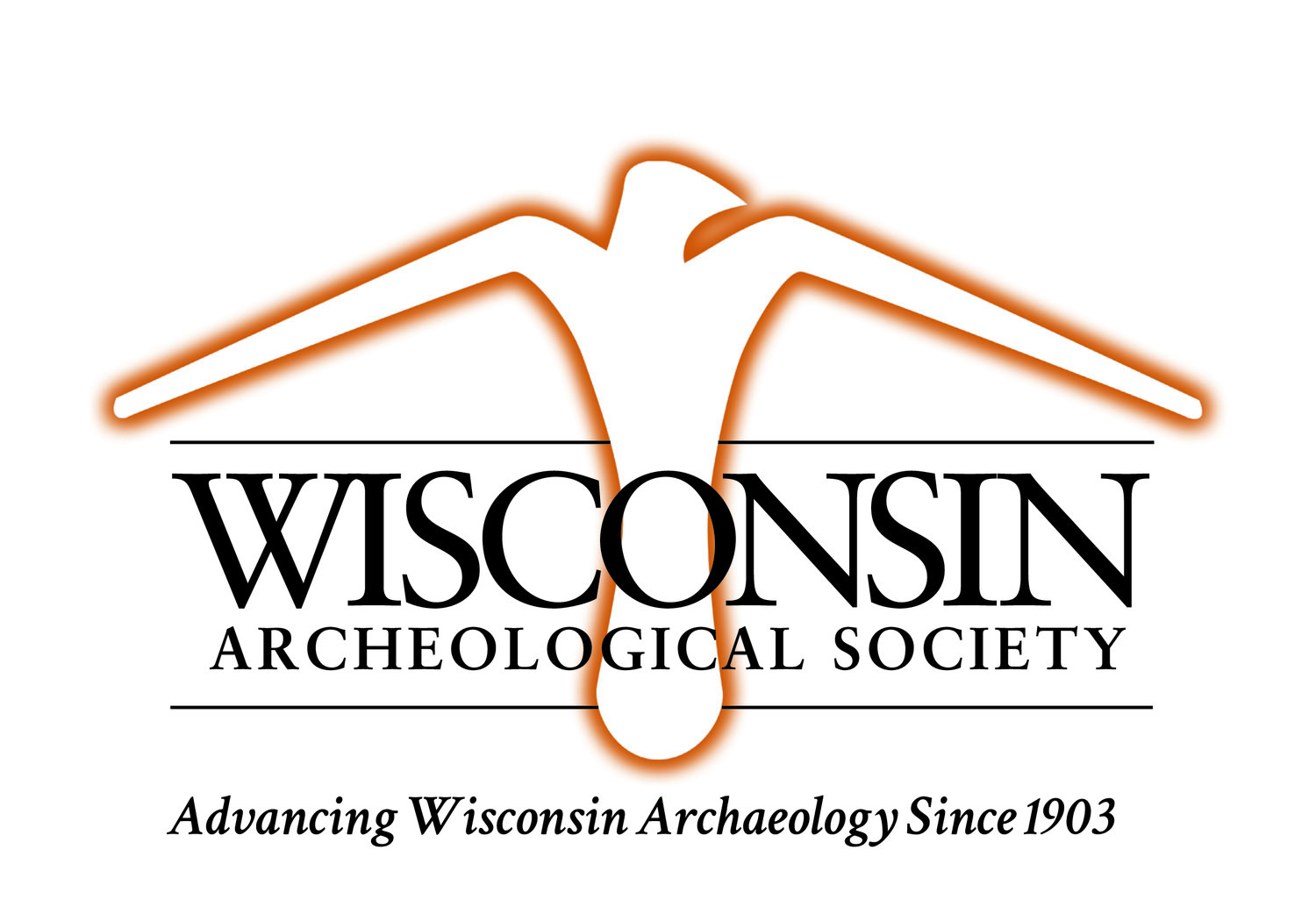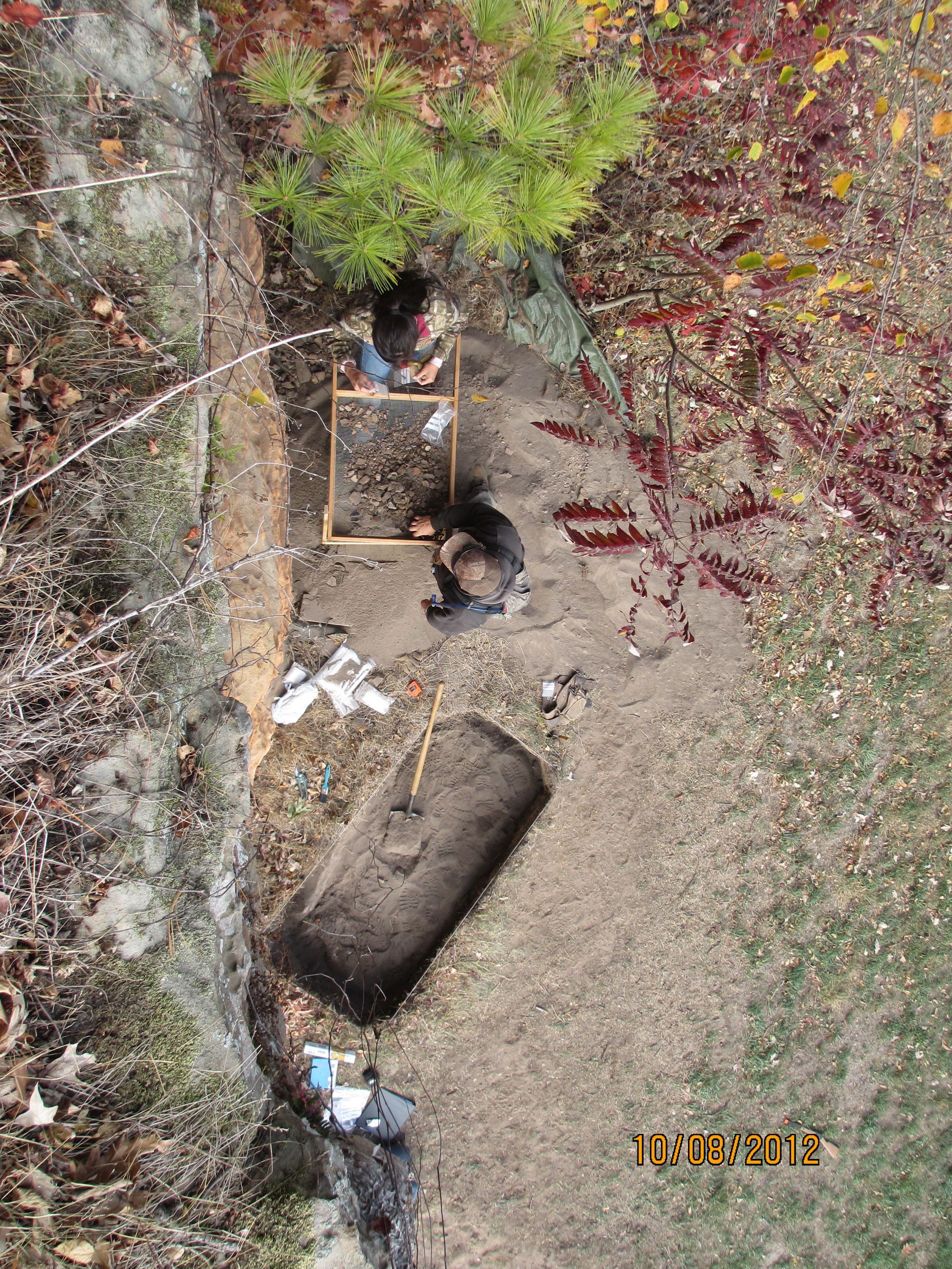Research Award 2013 winners — Results of Investigations
/Announcing the results of investigations by the 2013 WASRA Award Winners
In 2013, the Wisconsin Archeology Society provided funding to three student and avocational projects through the Wisconsin Archeological Society Research Awards (WASRA). Learn more about their research projects and the results of WASRA-funded investigations here:
Timothy Dahlen of Westby, WI obtained an AMS date from ceramic residue recovered during avocational research at the Ransom Rock Site (47VE1322) in Vernon County:
Val Pierce and Ryan Letterly excavating Unit 3 at 47VE1322.
The Ransom Rock site is located in a small valley that contains a tributary of the west fork of the Kickapoo River in Vernon County. The site is situated on the slope below a small sandstone outcrop located slightly above the valley floor. Four units were excavated at the site after several flakes and pottery sherds were found on the eroding surface below the outcrop. Each of the units revealed the presence of a sheet midden capped by varying amounts of fill. The midden contained large amounts of lithic debitage and faunal remains, as well as some pottery and charcoal. A Madison Triangular point was found at the base of the midden. Numerous plain, grit-tempered pottery sherds were present in the fill above the midden. The majority of the sherds appear to be from the same vessel, with rim sherds exhibiting a decorative pattern consisting of a combination of punctates and incised lines. A 2013 WASRA award was used to partially fund the AMS analysis of a sample of charred residue from the interior of one of the body sherds. A conventional radiocarbon age of 1540±30 BP was returned, which calibrated at the 2-sigma confidence level to Cal AD 430 to 600 (Beta-366562).
John M. Lambert, a PhD Candidate in the Department of Anthropology, University of California, Davis documented Paleoindian materials from private and museum collections
Archaeologists have long been interested in the behavior of the first human groups to occupy postglacial North America. Archaeological evidence indicates that Northern Wisconsin was first colonized by Agate Basin and Cody/Scottsbluff groups after 10,500-10,000 B.P. when glacial ice receded to the southern shore of Lake Superior. How these hunter-gatherer groups used mobility to cope with the unique ecological challenges presented by recently deglaciated landscapes remains a matter of considerable debate. Data I have gathered on a number of early Holocene lithic assemblages (n=9) from northern Wisconsin support the assertion that Paleoindian groups in the region were highly mobile. Average transport distances routinely exceed 200 km (several sites are located over 300 km from individual raw material sources), toolkit composition reflects a reliance on long-distance residential movement, and transport of toolstone occurs along a predominantly north/south axis, often between paired raw material sources that are inferred to lie at opposite ends of groups' annual ranges. Others have documented a strikingly similar pattern at early Paleoindian sites in the Great Lakes and Northeast, which has been interpreted as evidence for high seasonal mobility centered on the exploitation of large game. The distribution of specific lithic raw materials at the sites noted above implies that colonizing populations exploited an area extending from northeast Minnesota (e.g., Knife Lake siltstone and Gunflint silica) to central Wisconsin (e.g., Hixton orthoquartzite and Prairie du Chien chert). WASRA-funded travel to document the analysis of collections from the Forks View site in Calumet Co. Forks View site, as well as four other private collections containing Paleoindian material from a number of sites in Calumet and Sheboygan Co., as well as two museum collections, WI is helping to elucidate the behavior of groups at the southern end of this range, and is a crucial step toward answering questions about the role of mobility among human groups who colonize early postglacial landscapes.
Paleoindian projectile points and preforms in the Babler collection from the Forks View site (47-CT-100), including Clovis/Gainey (n=3), Folsom (n=1), Midland (n=2), Alberta (n=1), Agate Basin (n=11), Scottsbluff (n=14), Upper Valley Dalton (n=7), and several point and preform proximal (n=4), medial (n=10), and distal (n=8) fragments.
Katie Zejdlik, a Ph.D Candidate Department of Anthropology, Indiana University examined dentition of Late Woodland and Mississippian peoples:
WASRA award winner Katie Zejdlik
WASRA funding helped support my dissertation research, which is an investigation of biological relatedness between Cahokia and individuals at the northern limits of the Mississippian landscape. The processes behind the Mississippianization of the Midwest are unknown and often assumed to be the result of interaction with individuals from the Mississippian center, Cahokia. These assumptions are based on material culture and site organization but it is unknown to what level direct contact occurred. Biological relationships can be derived from the size and shape of teeth as these traits are genetically inherited. Individuals from 8 Wisconsin Effigy Mound sites and 2 Wisconsin Mississippian sites are being compared to individuals from Late Woodland and Mississippian sites in the Central Illinois River Valley and southern Indiana as well as Langford sites in northeastern Illinois. WASRA funding provided me the resources for travel, room, and board so that I could examine the Wisconsin component of this project.
2014 WASRA competition is NOW OPEN until March 15
See the following link for details:
http://wiarcheologicalsociety.org/research-award/







